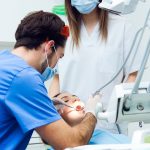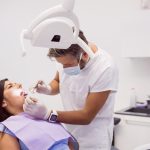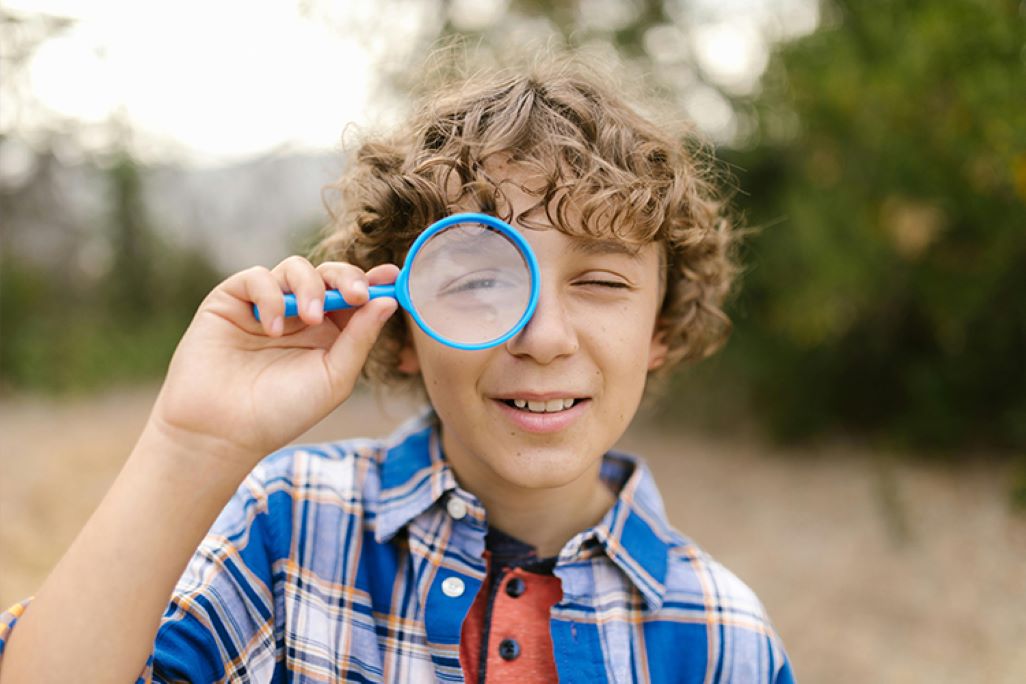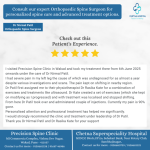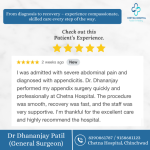In today’s screen-driven world, parents are increasingly concerned about their children’s eye health. Many notice their kids squinting while watching television, holding books too close, or complaining that the classroom board looks blurry. These are often signs of Myopia, also known as nearsightedness — one of the most common and rapidly growing eye conditions in children worldwide.
🌟 What Is Myopia?
Myopia is a refractive error of the eye in which distant objects appear blurry, while near objects are seen clearly. This happens when the eyeball grows slightly longer than normal or when the cornea (the clear front surface of the eye) is too curved.
As a result, light rays entering the eye focus in front of the retina instead of directly on it, causing difficulty in seeing faraway objects like the school board, traffic signs, or television.
Myopia typically begins in school-age children and tends to progress through adolescence, as the eyes continue to grow.
🔍 How Common Is Myopia in Children?
The prevalence of myopia has increased drastically over the last few decades. According to global studies:
- Around 30% of children worldwide are affected by myopia.
- In urban areas and digital-dependent lifestyles, the rate is even higher — touching 40–50% in some cities.
- Researchers predict that by 2050, almost half of the world’s population may be myopic.
This rise is strongly linked to changing lifestyles, early screen exposure, and reduced outdoor playtime.
📱 Why Myopia Is Increasing in Kids
Myopia is influenced by both genetic and environmental factors. Here are the main causes behind its increasing trend among children:
1. Excessive Screen Time
Prolonged use of smartphones, tablets, and computers makes children focus on close-up objects for extended periods. This continuous near work leads to eye strain and encourages the eyeball to elongate, increasing myopia risk.
2. Lack of Outdoor Activity
Outdoor light plays a vital role in healthy eye development. Studies have shown that children who spend more time outdoors produce more dopamine, a chemical that helps prevent excessive eye growth. Less outdoor time means higher chances of developing myopia.
3. Genetics
If one or both parents are myopic, the risk of their child developing myopia increases significantly. However, lifestyle factors can either accelerate or slow down the progression.
4. Poor Reading Habits
Reading or writing in dim light, sitting too close to books, or spending long hours studying without breaks can contribute to myopia development.
5. Urban Lifestyle
Children living in urban areas are exposed to less natural light and more indoor or screen-based activities — another key reason for rising myopia rates.
⚠️ Symptoms of Myopia in Children
Parents are often the first to notice changes in their child’s vision. Watch for these early warning signs:
- Squinting or blinking frequently to see distant objects clearly.
- Sitting too close to the TV or holding books very near the face.
- Complaints of headaches or eye fatigue.
- Difficulty seeing the classroom board or reading from a distance.
- Rubbing the eyes often or complaining of blurred vision.
- Poor academic performance due to unclear vision.
If your child exhibits any of these symptoms, it’s essential to schedule an eye check-up as soon as possible.
🧠 How Myopia Progresses
Myopia often starts in children aged 6 to 14 years and can worsen through the teenage years. During these growth phases, the eye continues to elongate, leading to stronger glasses every few years.
If not controlled, progressive or high myopia can lead to more serious eye complications later in life, such as:
- Retinal detachment – The retina pulls away from the back of the eye, leading to vision loss if untreated.
- Glaucoma – Increased eye pressure can damage the optic nerve.
- Cataract – Clouding of the natural lens of the eye at an earlier age.
- Myopic maculopathy – Degenerative changes in the retina that can cause permanent vision loss.
This is why early detection and regular monitoring are crucial.
🔬 How Myopia Is Diagnosed
A comprehensive eye examination by an ophthalmologist can easily diagnose myopia. The doctor will check:
- Visual acuity (clarity of vision at various distances)
- Refractive error measurement to determine the prescription
- Eye health evaluation to rule out other issues like lazy eye or squint
- Retinal examination if high myopia or complications are suspected
At Chetna Hospital, advanced diagnostic tests like retinal imaging, OCT (Optical Coherence Tomography), and refraction assessments are used to detect and monitor myopia precisely.
🌿 Prevention and Control of Myopia
While genetic factors cannot be changed, there’s a lot parents can do to reduce or delay the onset of myopia and prevent it from worsening.
1. Encourage Outdoor Play
Let your child spend at least 1–2 hours daily outdoors. Natural light helps regulate eye growth and reduces strain from close-up activities.
2. Limit Screen Time
Follow the 20-20-20 rule:
After every 20 minutes of screen use, look at something 20 feet away for at least 20 seconds.
Set limits on mobile and tablet usage — ideally, not more than 2 hours a day for entertainment purposes.
3. Ensure Proper Lighting
Encourage reading and studying under good lighting conditions. Dim light strains the eyes, while bright light helps maintain clarity and focus.
4. Maintain Correct Reading Distance
Teach children to hold books or devices at least 30–40 cm away from their eyes. Avoid letting them read while lying down or in moving vehicles.
5. Balanced Diet
A nutritious diet rich in vitamin A, C, E, lutein, and omega-3 fatty acids supports overall eye health. Foods like carrots, leafy greens, eggs, and fish are excellent for the eyes.
6. Regular Eye Check-Ups
Schedule an eye examination every 6–12 months, even if your child does not complain of poor vision. Early detection prevents long-term damage.
7. Follow Doctor’s Advice on Treatment
For children already diagnosed with myopia, your ophthalmologist may suggest:
- Prescription glasses or contact lenses
- Special myopia-control lenses or orthokeratology lenses (worn overnight)
- Low-dose atropine eye drops, proven to slow myopia progression
Each case is unique, so regular follow-up with your eye specialist is important.
👩⚕️ Treatment Options for Myopia
Modern ophthalmology offers effective treatment and control options for myopia in children:
🔹 Corrective Glasses
The most common and safest way to correct myopia. Regular updates ensure clear vision and comfort.
🔹 Contact Lenses
For older children or teens, soft lenses can be an alternative to glasses. Special lenses like orthokeratology (Ortho-K) gently reshape the cornea overnight to provide clear daytime vision.
🔹 Atropine Eye Drops
Low-dose atropine drops (0.01%) have shown excellent results in slowing the progression of myopia. They are safe when prescribed and monitored by an ophthalmologist.
🔹 Myopia-Control Lenses
New lens designs, such as multifocal or defocus lenses, are made specifically to slow myopia progression in children.
🔹 Laser Treatments (for Adults)
For stable myopia after adulthood, laser procedures like LASIK or SMILE can permanently correct vision. However, these are not performed in children.
🌈 Tips for Parents
- Don’t ignore your child’s complaints about blurry vision or headaches.
- Avoid excessive screen exposure, especially before bedtime.
- Promote hobbies that don’t involve near focus — like outdoor games or creative activities.
- Monitor posture during reading or screen use.
- Visit an eye doctor regularly, even if your child doesn’t wear glasses.
🏥 When to Visit an Eye Specialist
Seek professional help immediately if your child:
- Squints frequently or moves closer to see objects.
- Experiences sudden blurred vision or headaches.
- Complains of eye pain or eye strain.
- Fails a school vision screening.
Early detection can stop myopia from worsening and prevent complications in adulthood.
💬 Final Thoughts
Myopia may seem like a minor issue at first, but if ignored, it can affect your child’s learning, confidence, and long-term eye health. The good news is that with early diagnosis, lifestyle changes, and proper management, you can protect your child’s vision for life.
As a parent, your awareness and proactive care play a vital role in your child’s eye health. Encourage outdoor play, limit screens, and never skip routine eye check-ups.

